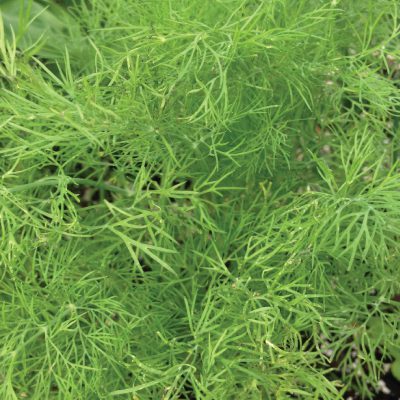
Learning Download: How to Grow Dill
From Seed to Harvest: A beginner’s guide to growing Dill
Dill is a popular herb that is used as seasoning in many different kinds of dishes such as soups, salad dressings and in pickling recipes. It is a fern-like, fragrant plant with a great flavor. In addition to its fragrant foliage, dill also produces yellow blooms that can be used in bouquets, or the green ferns can be used as filler. Dill can reach up to 3 feet tall.
To plant:
Dill grows best sown directly into the garden in the early spring after the last frost. To ensure a continuous harvest, plant dill seeds every 10 days up until the early summer. Plant seeds 1/4 inch deep and 18 inches apart.
Dill also can be planted in containers, like most herbs , but a deep pot should be used to accommodate for the herb’s deep roots.
To grow:
Dill can grow in soil with a pH of 5.5 to 7.5 but does best in soils with a pH between 5.5 and 6.5. Dill grows best in full sun, at least 6 to 8 hours each day, and regular water. Be careful not to overwater and allow the soil to go dry between watering. Dill can be susceptible to aphids, but if planted near cabbage, corn, lettuce, cucumbers and onions because it can distract the aphids from feasting on the other vegetables. Do not plant dill near carrots or tomatoes. In addition to distracting aphids form other plants, dill also can attract bees and butterflies.
Since dill can grow so tall, shelter it from wind or add a stake to the stem to support the plant as it grows higher.
To harvest:
Once dill is ready to harvest, you can snip individual stems or pull up the entire plant. Dill is ready to harvest anytime before its yellow, umbrella-like flowers begin to open. To save the dill seeds, cut the dill four inches below the flower head once seeds begin to turn brown. Hang the clippings upside down in paper bags to catch the seeds as they dry and fall out. To make dill pickles, the whole dill flower head and it s ferns are often included in the jar with the pickled vegetables.
What dill craves:
Similar to most herbs, dill does not require fertilizing to grow. In the late spring, a light feeding of a 5-10-5 fertilizer will encourage the dill to grow without being overbearing.
Use 3 ounces of fertilizer per 10 feet of dill if planted in a row. If dill is grown in a container, use a liquid fertilizer but only use half of the label’s recommended strength. Fertilize container dill every four to six weeks.
Where to buy dill seeds:
You can find different varieties of dill seeds at Urban Farmer.

